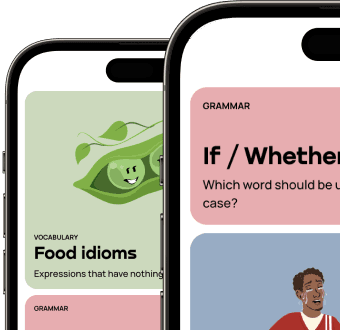Pronom personnel complément – Master object pronouns in French
Contents
Key takeaways
- Object pronouns replace nouns that are the object of the verb.
- Two main types: direct (me, te, le, la, nous, vous, les) and indirect (me, te, lui, nous, vous, leur).
- Other object pronouns: y (there/it) and en (some/of it/them).
- They are placed before the verb (except in affirmative imperatives).
- The order of pronouns follows strict placement rules.
What Are Object Pronouns in French?
Object pronouns (pronoms personnels compléments) replace nouns that receive the action of the verb, avoiding repetition.
Example:
- Je vois Marie. → I see Marie.
- Je la vois. → I see her.
The French Object Pronouns
Direct Object Pronouns
Replace nouns without prepositions.
- me, te, le, la, nous, vous, les
Indirect Object Pronouns
Replace nouns introduced by à.
- me, te, lui, nous, vous, leur
Other Pronouns
- y = there, replaces à + thing/place.
- en = some/of it/them, replaces de + noun.
The Order of French Object Pronouns
Object pronouns follow a fixed order when more than one appears in a sentence.
Order chart:
- me, te, se, nous, vous
- le, la, les
- lui, leur
- y
- en
Example:
- Je le lui donne. → I give it to him/her.
- Tu m’y as conduit. → You drove me there.
- Elle nous en parle. → She talks to us about it.
1
Placement Rules
1. Before the verb (simple tenses)
- Je le vois. → I see him/it.
2. Before the auxiliary (compound tenses)
- Je les ai vus. → I saw them.
3. Before the infinitive
- Je vais le lire. → I’m going to read it.
4. In the negative
- Je ne lui parle pas. → I don’t speak to him/her.
5. In affirmative imperatives
Pronouns come after the verb with hyphens.
- Donne-le-moi ! → Give it to me!
Agreement in Compound Tenses
- With direct objects, the past participle agrees when the pronoun comes before.
- Les fleurs ? Je les ai achetées. → I bought them.
- With indirect objects, no agreement.
- Je leur ai écrit. → I wrote to them.
Examples of Object Pronouns in Sentences
- Il m’invite ce soir. → He invites me tonight.
- Je vous écoute. → I’m listening to you.
- Nous lui avons téléphoné. → We called him/her.
- Elle y va demain. → She is going there tomorrow.
- Tu en veux ? → Do you want some?
Common Mistakes
- Mixing up direct vs indirect (le vs lui).
- Forgetting the strict pronoun order (Donne-moi-le ❌ → Donne-le-moi ✅).
- Confusing y and en.
Exercises: Practice Object Pronouns
1. Replace the object with a pronoun
- Je vois Paul. → ________
- Nous parlons à Marie. → ________
- Tu veux des pommes ? → ________
2. Translate into French
- I give it to him.
- She sends us some.
- We are going there tomorrow.
3. Correct the mistakes
- ❌ Je lui le donne.
- ❌ Il en y va.
Answers
- Je le vois | Nous lui parlons | Tu en veux
- Je le lui donne | Elle nous en envoie | Nous y allons demain
- Je le lui donne | Il y va
Tips for Mastering French Object Pronouns
- Learn the pronoun order chart by heart.
- Practice with simple sentences before moving to complex ones.
- Compare with English equivalents to clarify direct vs indirect.
- Train with imperatives where pronoun placement flips.
For deeper learning, explore french verb explained. To improve study habits, check learning French effectively. And to stay motivated, see how long it takes to learn French fluently.
Summary
French object pronouns include direct (me, te, le, la, nous, vous, les), indirect (me, te, lui, nous, vous, leur), and others (y, en). They replace nouns, follow strict order, and usually precede the verb.
Resources like Glossika’s breakdown of French Object Pronouns and Lingoculture’s guide provide detailed explanations. With practice, structures like Je le lui donne, Elle nous en parle will become second nature as you advance your French level.

Comments